In the heart of the rainforests of Sumatra, Indonesia, a botanical wonder towers over the foliage—the Amorphophallus titanum, commonly known as the Titan Arum or the Corpse Flower. With its colossal size, striking appearance, and unique reproductive strategy, this remarkable plant has earned its place as one of nature’s most extraordinary and awe-inspiring marvels. Let’s venture into the captivating world of Amorphophallus titanum and explore the remarkable qualities that make it a true gem of the botanical kingdom.
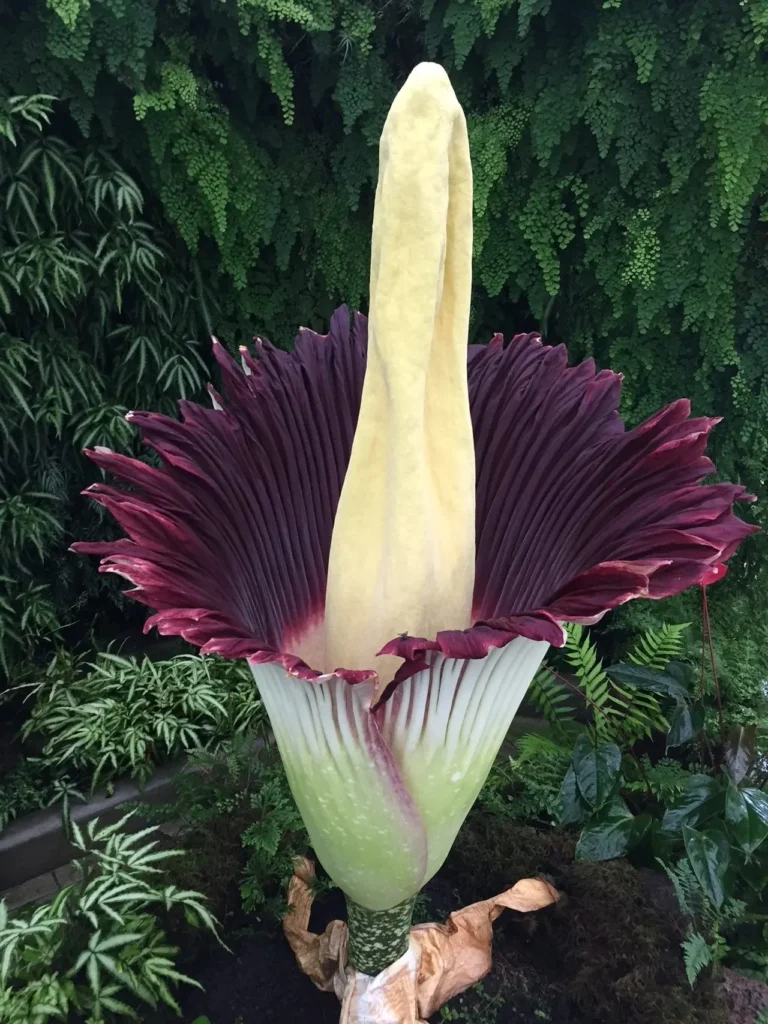
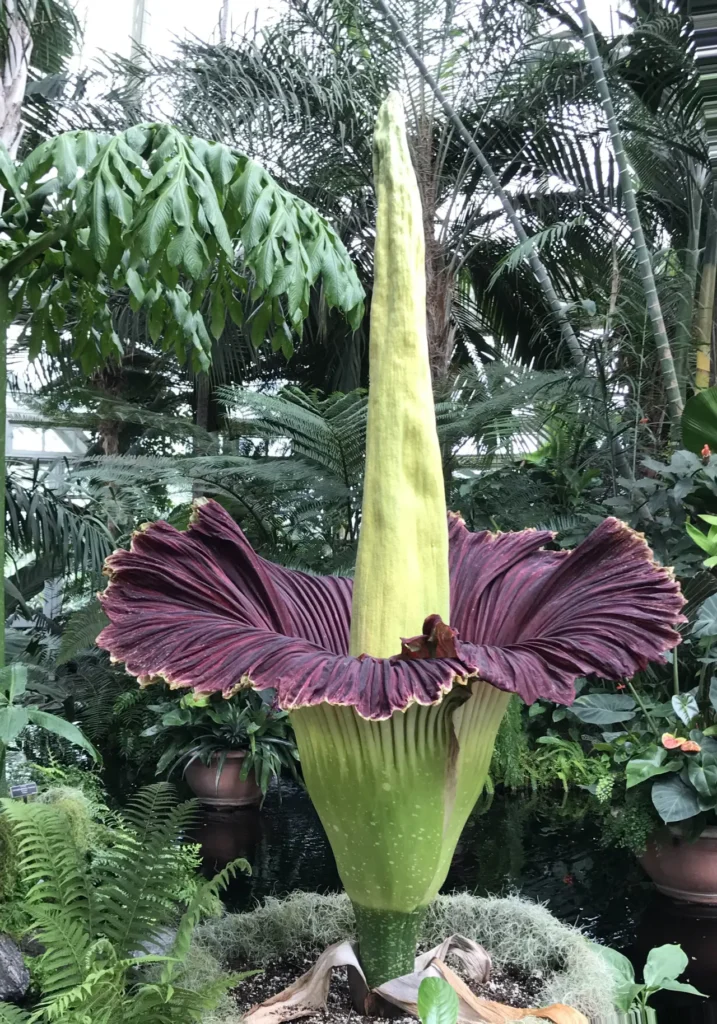
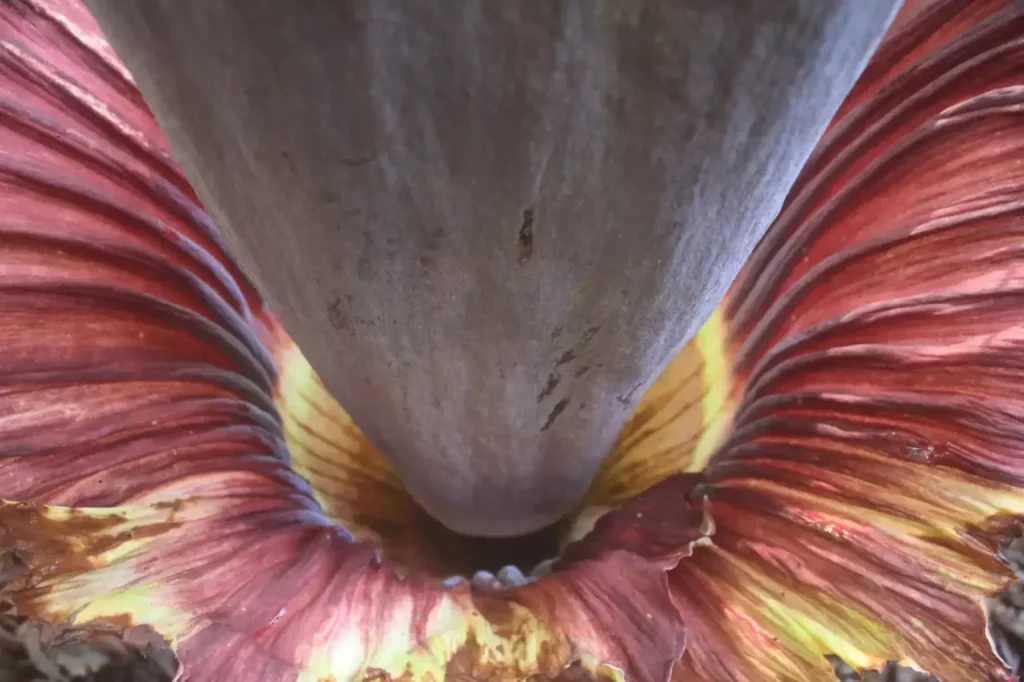

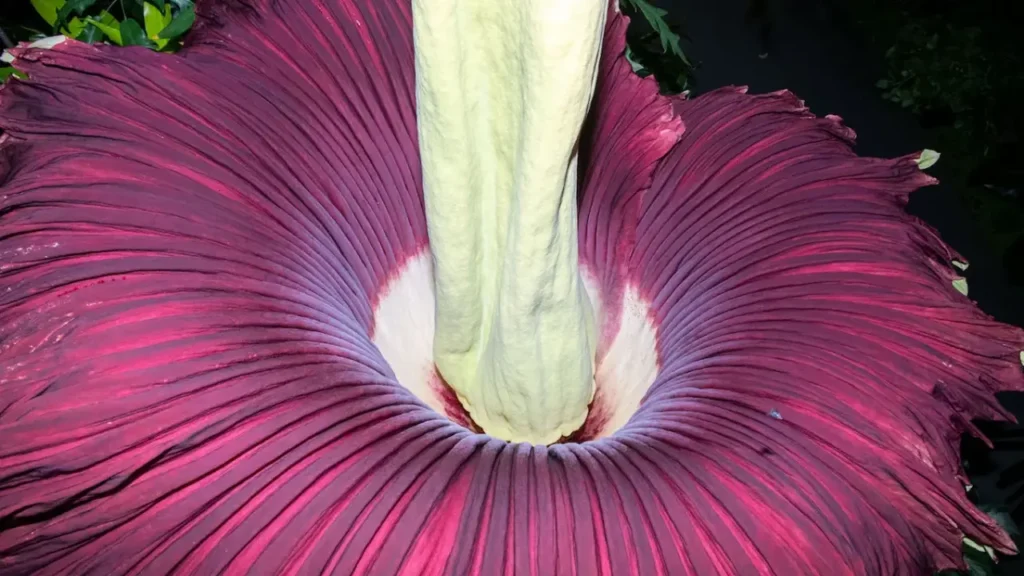
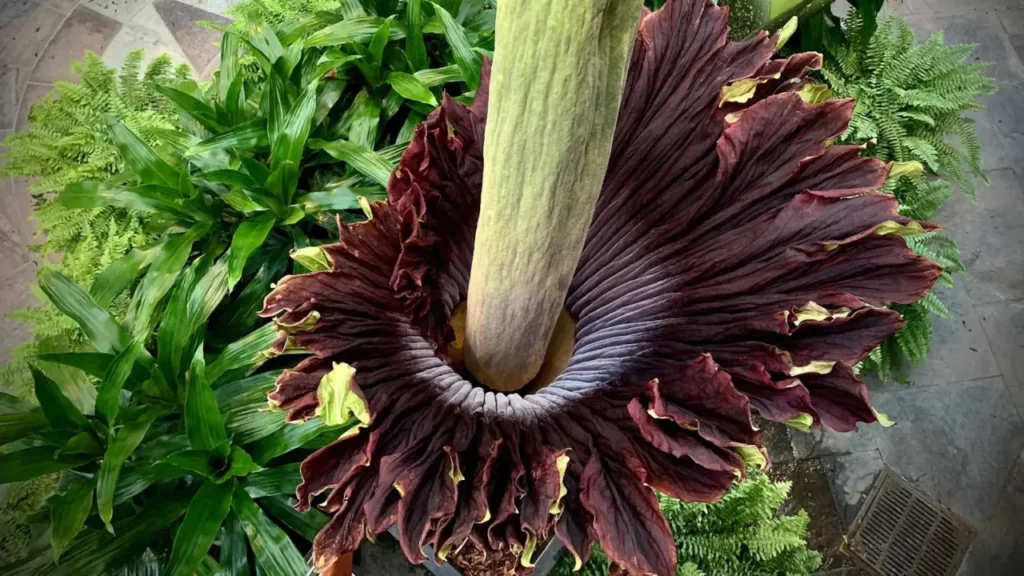


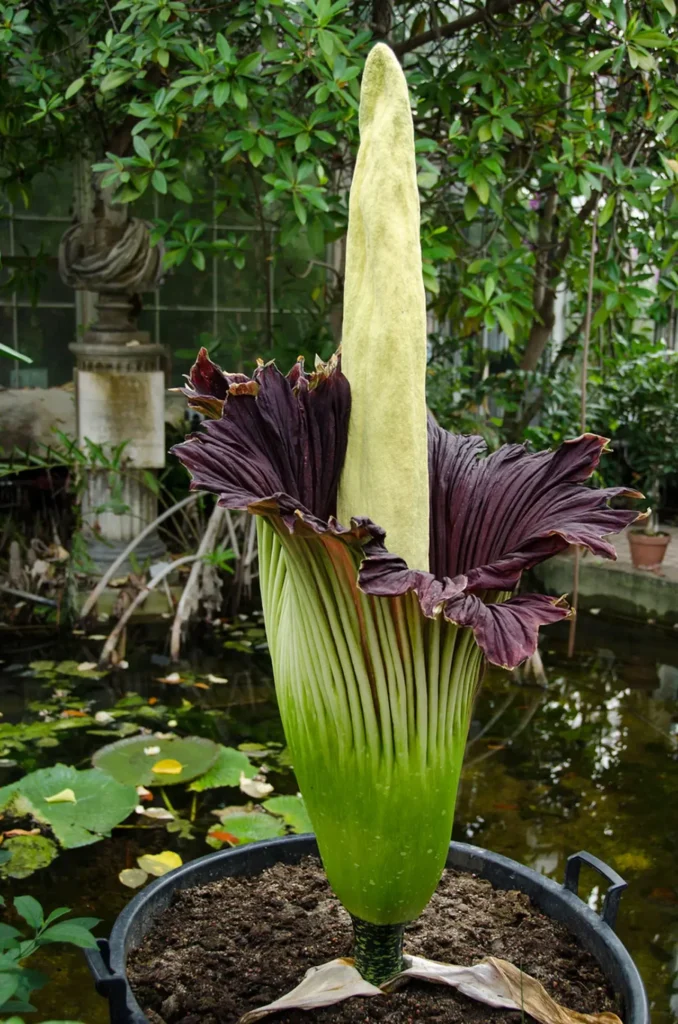
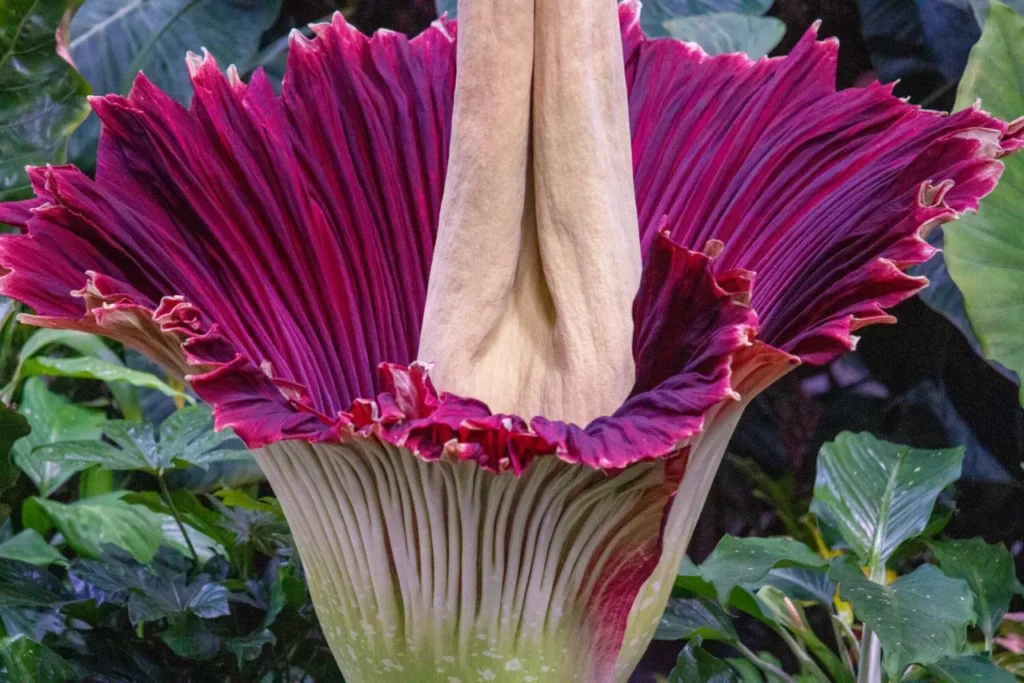
Appearance and Size
The Amorphophallus titanum is famous for its enormous size, making it one of the largest flowers in the world. The plant consists of a single leaf stalk that can reach heights of up to 20 feet, towering over its neighbors in the rainforest. The leaf, which resembles a large umbrella, is composed of multiple leaflets, giving it a palm-like appearance.
The true spectacle of the Amorphophallus titanum lies in its flowering stage. When it blooms, the plant produces a massive inflorescence, or flower structure, which can reach over 10 feet in height. This inflorescence is made up of a tall central spadix covered in small flowers and a surrounding spathe, which is a large, flared, and funnel-shaped structure that encases the spadix. The spathe is a striking shade of deep maroon, while the spadix is a darker color, resembling a large spike.
Unique Reproductive Strategy
The Titan Arum is known for its unique and specialized reproductive strategy. Unlike most plants that bloom annually or more frequently, the Amorphophallus titanum can take several years to flower, often up to a decade or more. This infrequent blooming cycle is a rare spectacle in the botanical world and adds to the allure and excitement surrounding the plant’s flowering events.
Additionally, the Titan Arum has a rather peculiar and captivating method of attracting pollinators. During its flowering stage, the plant emits a strong and putrid odor, often likened to the smell of rotting flesh. This odor is what gives the flower its nickname, the Corpse Flower. The foul scent serves to attract carrion beetles and flies, which mistake it for a decomposing animal and become unwitting pollinators as they search for a food source.
Conservation and Protection
The Amorphophallus titanum is classified as a vulnerable species due to habitat loss and deforestation in its native range. As rainforests in Sumatra are increasingly threatened by human activities, the natural habitats of the Titan Arum face challenges, impacting the plant’s survival in the wild.
Botanical gardens and conservation organizations around the world play a crucial role in preserving and propagating the Amorphophallus titanum, ensuring its continued existence for future generations to marvel at.
A Grand Marvel of Nature
The Amorphophallus titanum, with its colossal size, captivating appearance, and unique reproductive strategy, stands as a grand marvel of nature—an awe-inspiring testament to the extraordinary diversity of the botanical kingdom. As we celebrate the wonder and intrigue of the Titan Arum, we are reminded of the intricate and astonishing wonders found within the rainforests of Sumatra and the rich tapestry of life that the Earth has to offer. May this grand stinky marvel continue to captivate and inspire us, reminding us of the precious treasures that nature holds and the importance of preserving our natural heritage.








